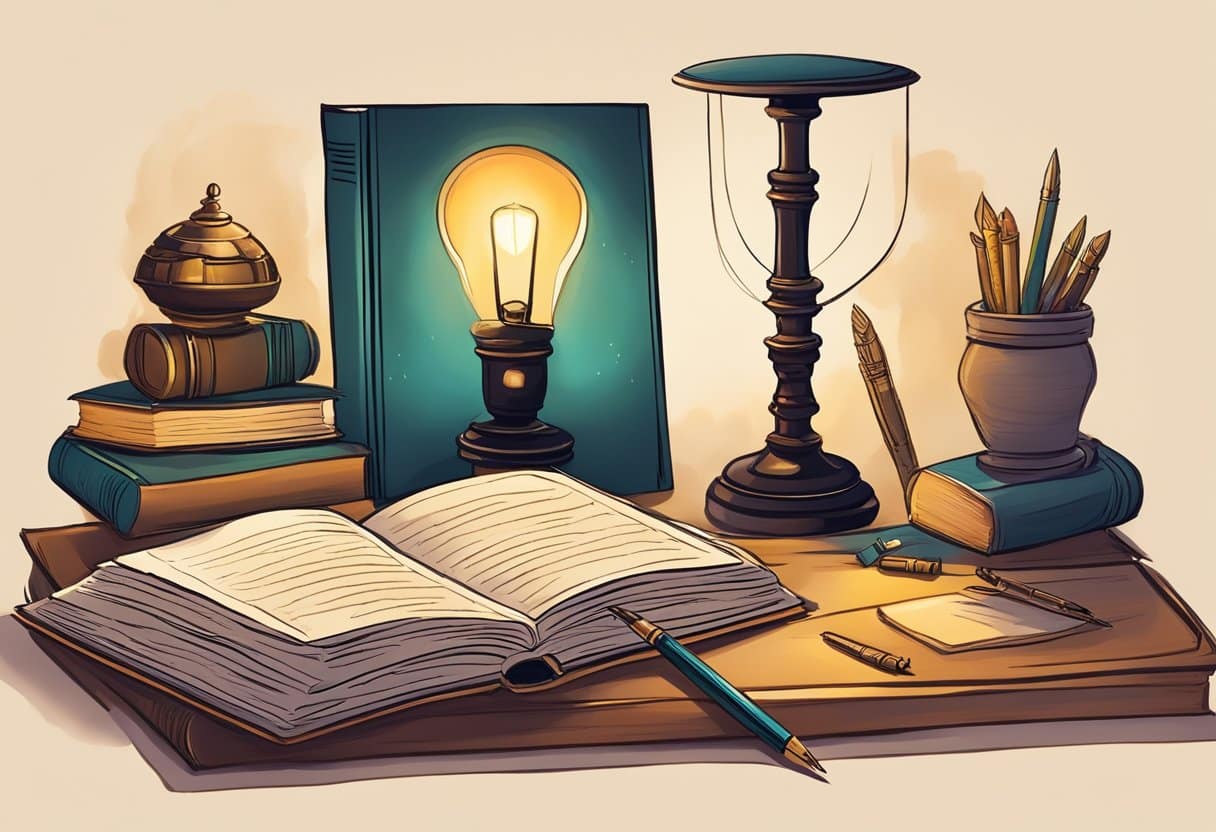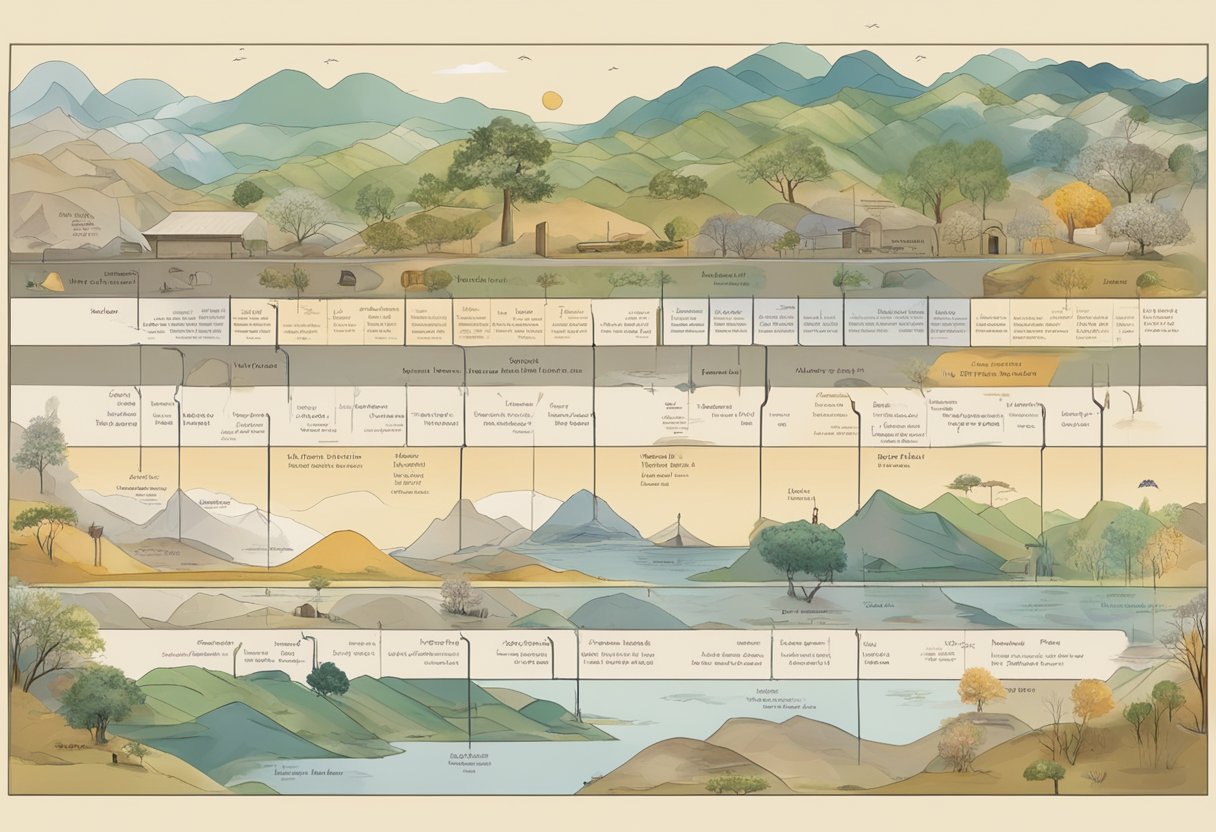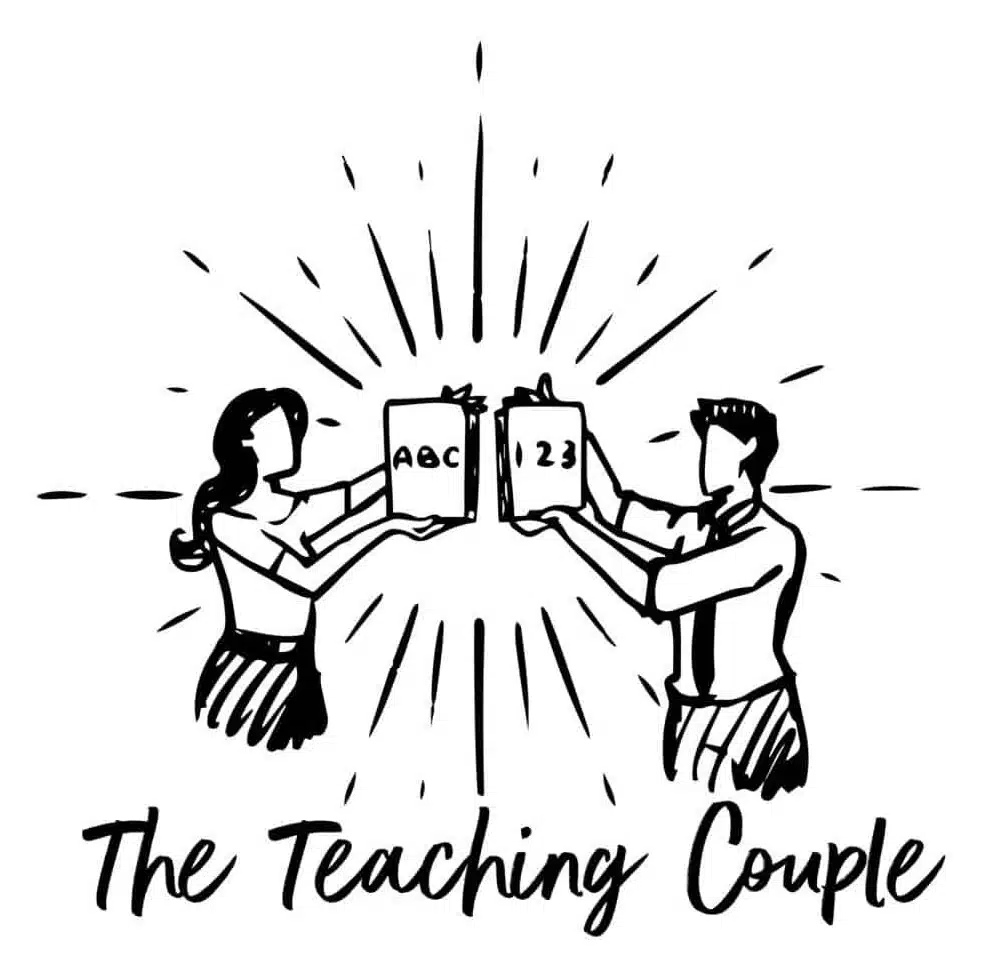Couplet poetry is a fundamental form of verse that is both intriguing in its simplicity and profound in its potential for expression. A couplet consists of two lines of poetry that usually rhyme and have the same metre.
This structural hallmark makes couplets particularly memorable and they often encapsulate a complete thought, making them powerful tools for poets.
Throughout literary history, from Chaucer to Shakespeare, couplets have been employed to convey a vast array of themes and emotions.
Related: For more, check out our article on How To Teach Couplet Poetry here.

The ability of couplets to be both self-contained and part of a larger poem allows for diverse usage. They can stand alone as a concise poetic form or serve as building blocks in longer verse.
Different types of couplets, like the heroic couplet or the open couplet, offer a richness to the form, with each variety adhering to its own set of rules around rhythm and rhyme scheme.
Analysing notable couplets gives insights into the mastery behind succinctly capturing deep and complex sentiments within just two lines.
Key Takeaways
- Couplets form a distinct and memorable unit in poetry with a strong tradition.
- The varied types of couplets offer different frameworks for poets to express ideas.
- Analysing couplets reveals the skill involved in creating impactful poetry in brief.
Related: For more, check out our article on Examples of Ekphrastic Poetry here.
Fundamentals of Couplets
A couplet consists of two lines of verse that usually rhyme with each other and are of the same length and rhythm. This pairing of lines is a classic form of poetry with a long-standing history in English literature.
Couplets often function as a stanza on their own or as part of a larger poem. They are recognised for their ability to summarise an idea or present a poignant conclusion, particularly when used at the end of a sonnet or other longer poetic forms.
The meter of couplets is predominantly iambic pentameter, where each line consists of five iambic feet. An iamb is a metrical foot containing an unstressed syllable followed by a stressed syllable (da-DUM).
The rhythm in iambic pentameter is measured and steady, resembling the natural flow of speech.
When written in this meter, couplets are often referred to as heroic couplets due to their frequent use in epic and narrative poetry.
- Rhyme Scheme: Typically, a couplet follows an AA rhyme scheme, meaning that both lines end in rhyming words.
- Form: They may either stand alone or form part of a more complex structure, sometimes concluding sections of a poem.
- Verse: The term “couplet” can also refer broadly to any two lines of poetry, regardless of rhythm or rhyme, but traditional couplets do exhibit a clear harmony.
Couplets have been employed by poets to achieve a variety of effects, from comedic timing to philosophical reflections, exemplifying the versatility and enduring appeal of the form.
Related: For more, check out our article on Examples of Cinquain Poetry here.
Historical Development of Couplets

Couplet poetry has evolved significantly over time, becoming a staple in a range of poetic traditions worldwide.
It originated in the Middle East with a form called qasida, but its structure spread to other cultures, notably impacting Chinese poetry.
In the Western literary canon, Geoffrey Chaucer, known for his work The Canterbury Tales, is recognised as an early adopter of the couplet format in English literature.
His use of iambic pentameter in the 14th century set a precedent for future English poets.
The 17th century saw the couplet refined by the likes of John Dryden. Through his translations of classical works and his own creations, Dryden popularised the heroic couplet, a form of couplet that is rhymed and in iambic pentameter, which became a dominant force in English poetry.
Alexander Pope, another English poet, further developed the heroic couplet’s potential in the early 18th century. His works are often exemplary of the form’s capacity for wit and narrative clarity.
He was particularly adept at the closed couplet, which is self-contained in terms of meaning and syntax.
The Shakespearean sonnet form, although distinct from couplet-focused poems, typically concludes with a couplet that encapsulates the poem’s themes.
William Shakespeare’s employment of this strategy shows the couplet’s power to deliver a poetic punch.
Into the 19th century, William Blake used couplets in a more free and visionary manner, as seen in ‘The Tyger’. His work demonstrates the adaptability of couplets outside their stricter, classical uses.
Related: For more, check out our article on Examples of Free Verse Poetry here.
Variations and Types of Couplets
In the realm of poetry, couplets are pairs of lines that typically rhyme and have the same metre.
Several variations exist, each serving a distinct purpose and stylistic function within a poem.
- Closed Couplet: Also known as a heroic couplet, it consists of two successive rhyming lines that contain a complete thought, often found in iambic pentameter. This type of couplet is widely used in English poetry and is prominent in the works of poets like Alexander Pope.
- Open Couplet: Contrasts the closed couplet by not concluding a thought within the two lines. Instead, the thought runs over into the following couplet or stanza, maintaining the poem’s flow and creating a connected, continuous thought.
- Heroic Couplet: This form is characteristic of epic and narrative poetry, known for its formal and grandiose tone. Notable examples include Geoffrey Chaucer’s “The Canterbury Tales” and John Dryden’s works.
- Elegiac Couplet: A classical form used often in ancient Greek and Latin poetry, featuring a line of dactylic hexameter followed by a line of dactylic pentameter. These couplets typically explore themes of loss and mourning.
- Shakespearean Sonnets: Although not a couplet type itself, Shakespearean sonnets conclude with a rhyming couplet that summarises or presents a twist to the preceding quatrains.
Below is a simple table outlining where these couplets frequently appear:
| Couplet Type | Common Usage |
|---|---|
| Closed Couplet | Self-contained argument or point |
| Open Couplet | Extended thoughts across stanzas |
| Heroic Couplet | Formal, declarative voice in epic narratives |
| Elegiac Couplet | Mourning and remembrance in ancient literature |
| Shakespearean Sonnets | The concluding, summarising lines |
Couplets, in their myriad forms, enrich poetry with structural variety and rhythmic appeal. Each type serves to convey emotion, complete or extend thoughts, and add depth to the literary work they comprise.
Related: For more, check out our article on Examples of Villanelle Poetry here.
Analysis of Notable Couplets
When examining the hallmark of English poetry, the couplet stands out for its clarity and rhythmic sophistication.
Notable examples are found throughout literary history, showcasing how a pair of rhymed lines can encapsulate wisdom, wit, or a poignant message.
Alexander Pope was a master of the heroic couplet, often using iambic pentameter to deliver insightful commentary.
For instance, in “An Essay on Criticism,” Pope provides guidance on literary interpretation with precision: A little learning is a dang’rous thing; Drink deep, or taste not the Pierian spring.
The lines caution against superficial understanding, urging deeper engagement with knowledge.
Pope’s use of couplets extended to his “Epistles to Several Persons,” where he conveys moral and philosophical concepts with the same ease, often critiquing social mores through memorable couplets.
William Blake’s “The Tyger,” though not structured exclusively in couplets, uses this form effectively: Tyger Tyger, burning bright, In the forests of the night; Here, the couplet serves to evoke a powerful image of the tiger and to underscore themes of creation and existential questioning.
Couplet poems come in various forms, but their purpose often converges on distilling complex ideas into a tight, impactful format.
They allow poets to make sharp observations or leave the reader with a resonant takeaway in just two lines, showcasing the incredible economy of language this form affords.
Related: For more, check out our article on Examples of Elegy Poetry here.
Writing Couplets in Poetry
When poets embark on composing couplets, they engage with a traditional and compelling form of art that delivers meaning in a compact structure.
Couplets, essentially, are pairs of lines that typically rhyme and possess the same metre, thus forming a unit.
Techniques in crafting couplets revolve around the effective use of lyrical language. This language, often marked by its musicality, should flow seamlessly from one line to the next.
Poets strive to create a resonant echo between the end words of each line, encouraging a harmonious and pacing cadence.
Format plays a pivotal role in couplets. It’s not only about how the words sound but also how they look on the page.
Wise utilisation of white space can amplify the impact of the couplets, guiding the reader’s rhythm and breathing.
The table below illustrates the basic building blocks of a couplet:
| Element | Function |
|---|---|
| Rhyme | Endings of the two lines sound alike |
| Metre | A uniform rhythmic structure across both lines |
| Idea Completion | The second line often answers or complements the first |
While writing couplets, one might begin with an idea or emotion and distil it into its most expressive form, employing elegant language without unnecessary embellishment.
The challenge lies in the brevity required—each word must be meticulously chosen for its sound, rhythm, and meaning.
Through couplets, poets can explore the essence of a theme swiftly and memorably, making each word count in this distinctive poetic form.

